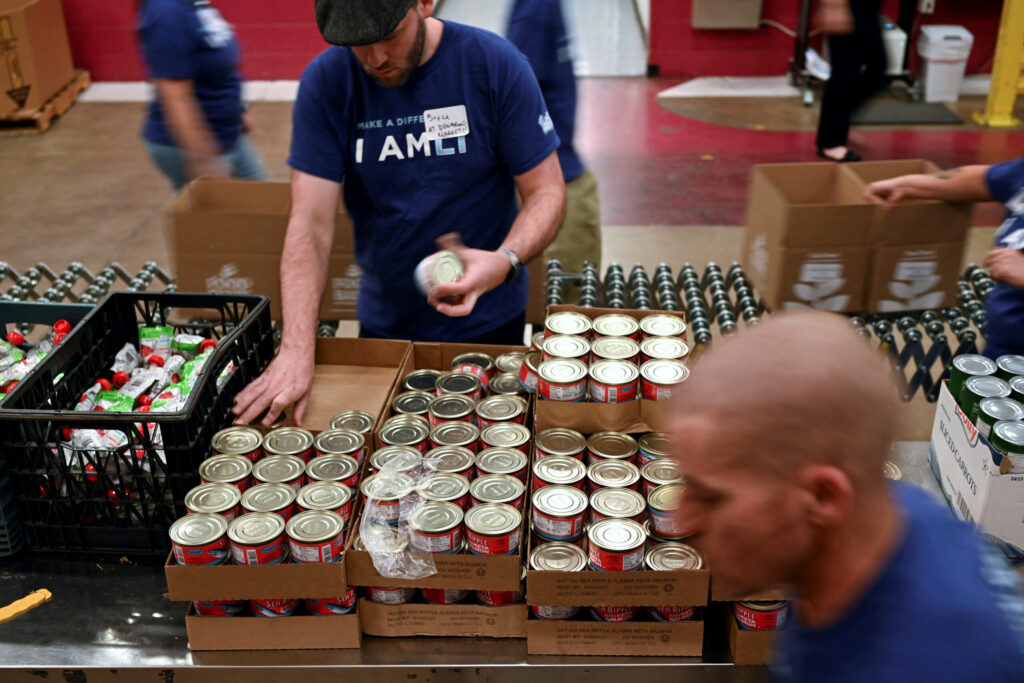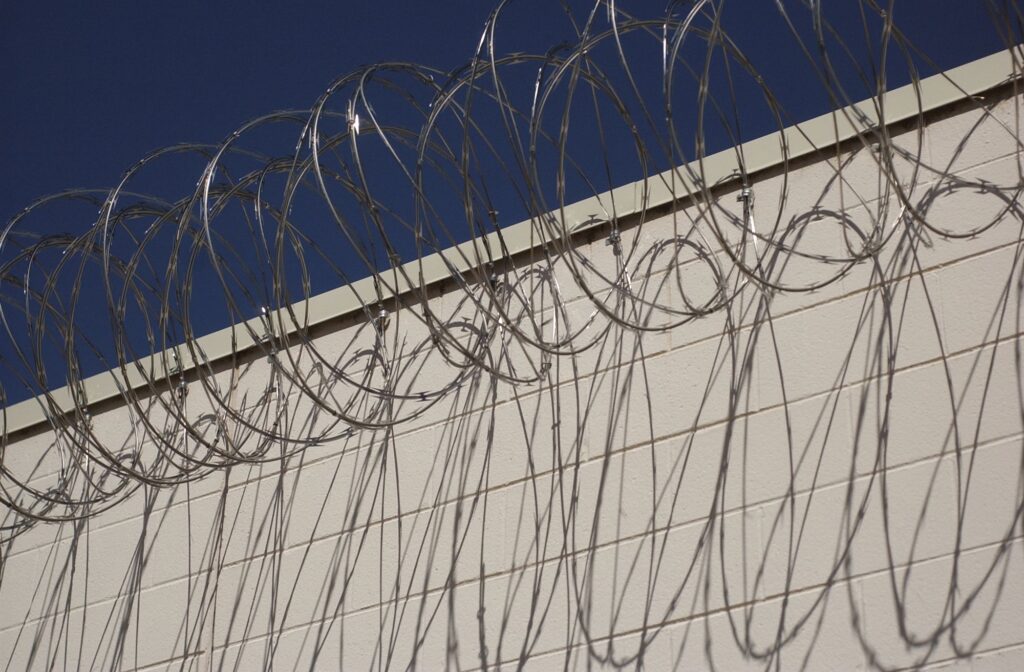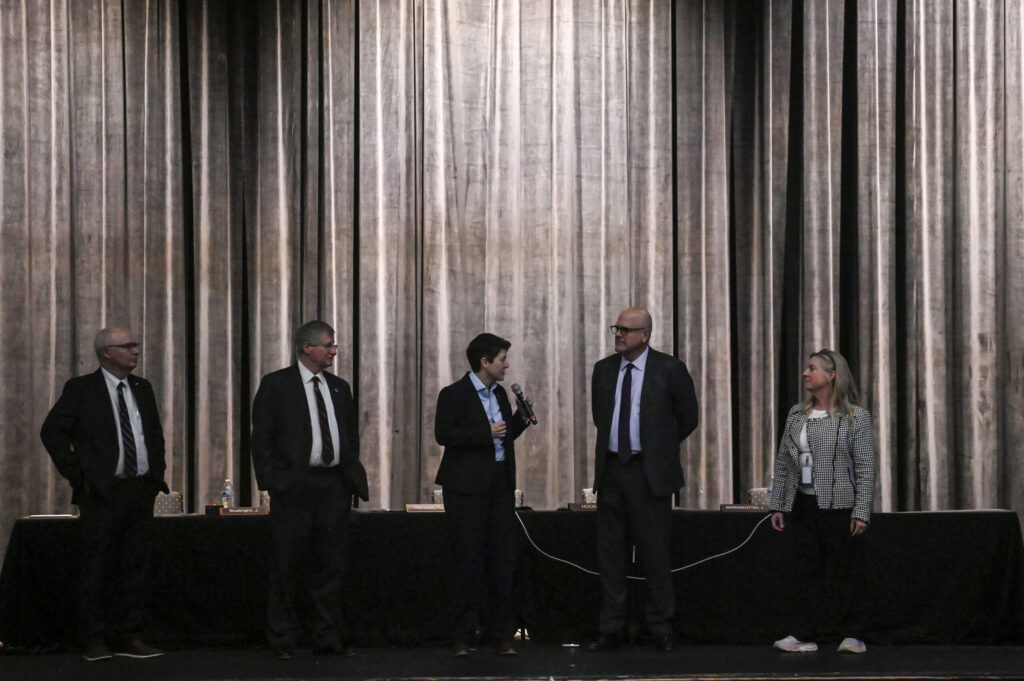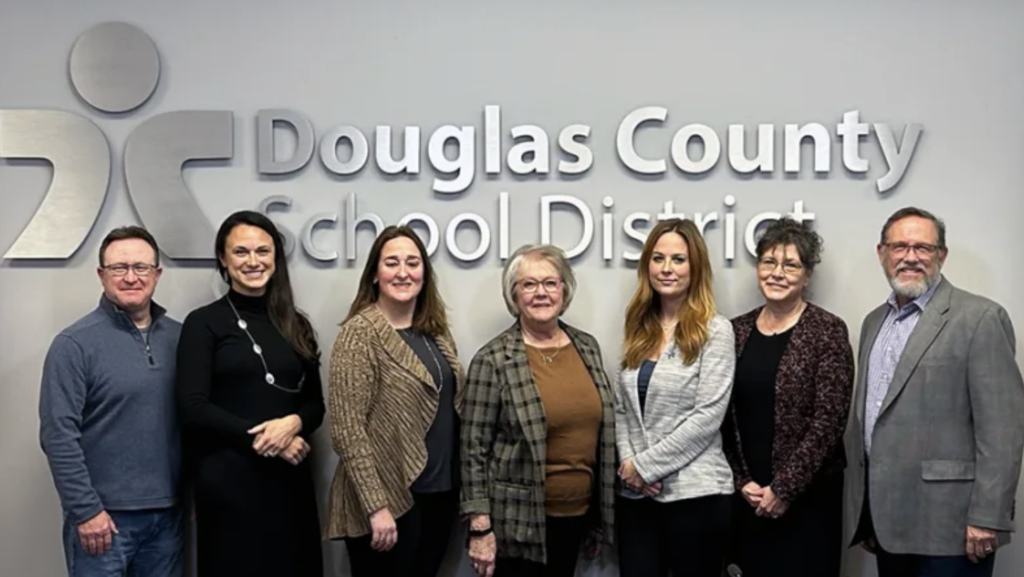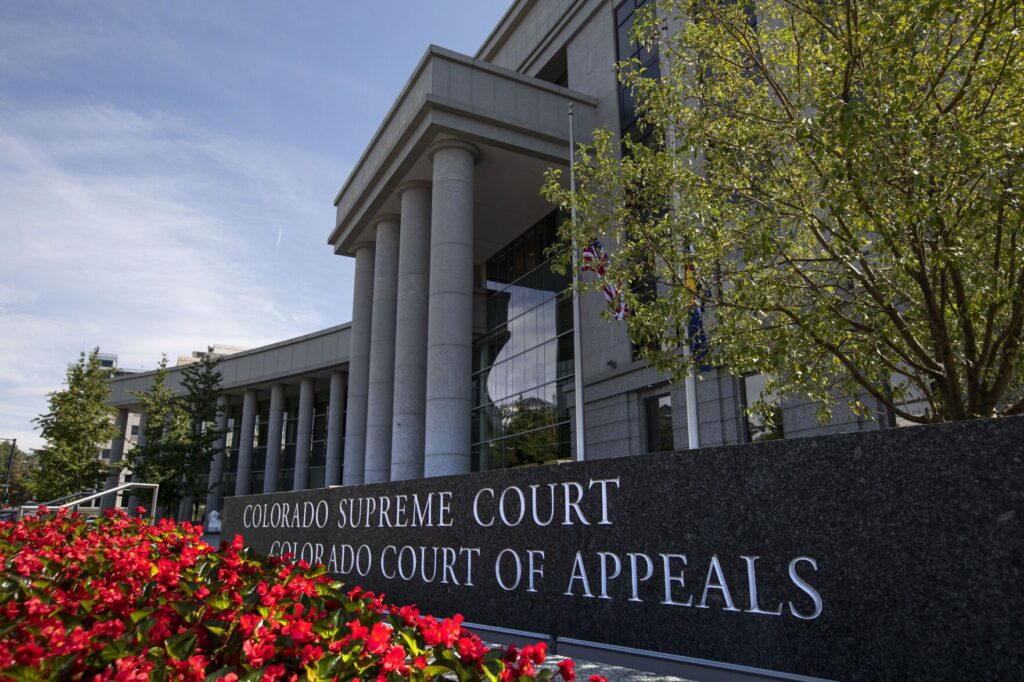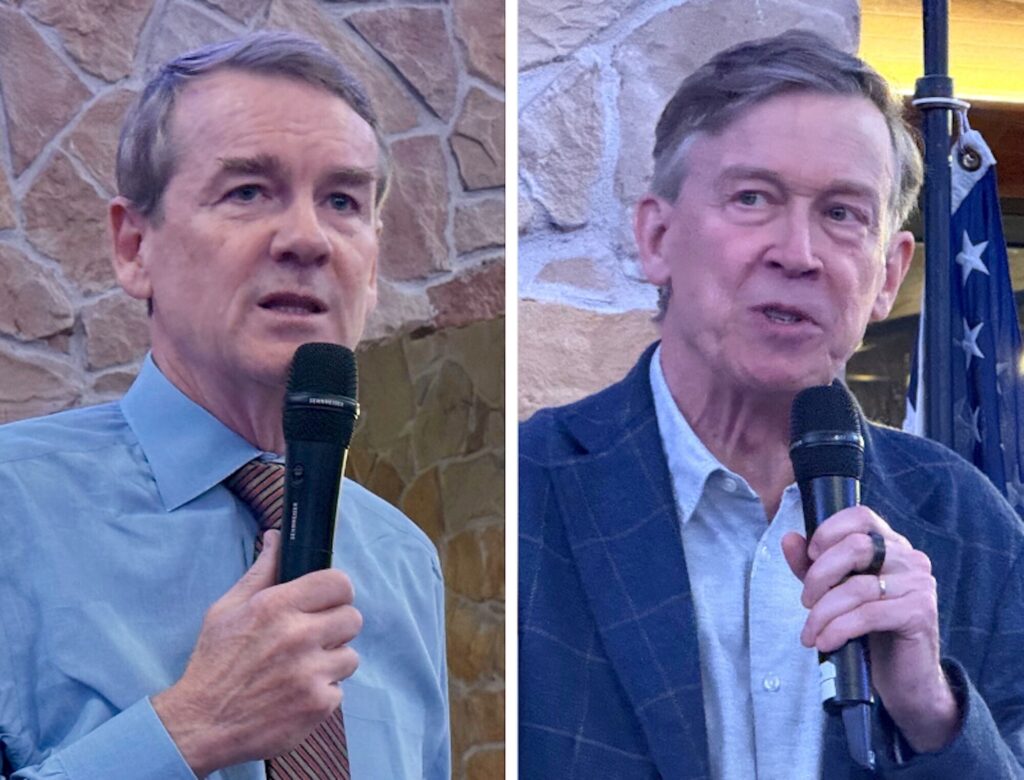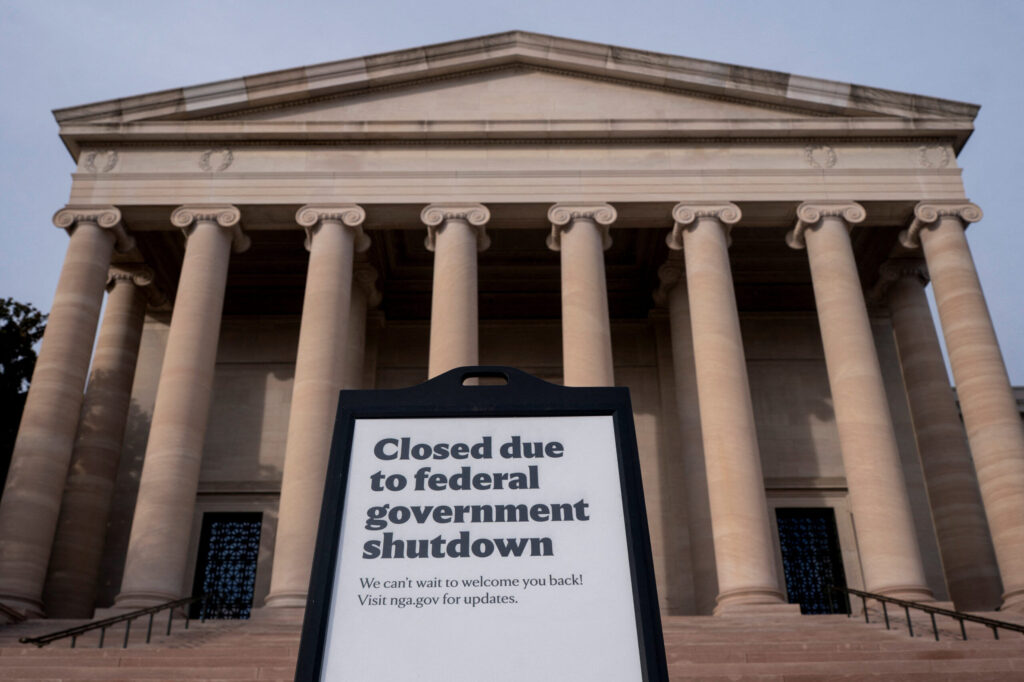Colorado wildfire outlook ‘normal’ — but normal has new meaning in wildfire-prone state
Colorado’s fire risk for the upcoming season is average, Gov. Jared Polis said at a news conference Thursday. But average means there will be many wildfires in the state and they will likely be large, fire officials emphasized.
“Today, it’s more a question of when, not if, a fire will affect our community,” Polis said.
In the short term, there’s heightened wildfire risk in southeast Colorado, then later in the summer, heightened risk in southwest Colorado, fire officials said.
Stan Hilkey, the executive director of the Colorado Department of Public Safety, said the “normal” fire outlook should be taken cautiously.
“I want to be cautious by what I mean by normal,” he said. “That means that we’ve had fires and we’re going to continue to have fires. Some will be big and we’re going to be busy, and that’s what normal looks like in Colorado anymore.”
Colorado Division of Fire Prevention and Control Director Mike Morgan added that fire season in Colorado has changed over the years.
“We used to look at fire season as about a four month period and that’s no longer the case,” Morgan said. “We have fire disasters every month of the year in the state of Colorado and we can’t afford to let our guard down.”
In a normal season, Colorado will have about 6,000 wildfires that burn about 160,000 acres, Morgan said.
Staff cuts have not affected firefighters and emergency personnel, said Doug Vilsack, the state director for the Bureau of Land Management. Polis added, however, that while cuts have not impacted firefighters themselves, they may affect people in support roles, such as those who ticket people lighting illegal fires.
Colorado’s firefighters are “ready” for the season, Hilkey said, adding that individual and community preparedness is equally important.
On average across the county, human-caused wildfires make up 90% of all wildfires each year, he said. Firefighters need the public’s help to make sure campfires are put out completely and fire warnings and restrictions are taken seriously.
Hilkey also urged the public to make sure they’re signed up for local alerts and have plans for preparedness and evacuation in case of a fire. He also asked that people respect fire closures when they happen.
“Our moto at the Department of Public Safety is we’re safer together,” he said. “When we work together with you, we can make Colorado a safe place to be.”
Patty Champ, a research economist at the Rocky Mountain Research Station, said people can shift the odds in their favor.
“We have really great fire science and we know what needs to be done in terms of how you can shift the odds, and you can do that,” Champ said. “You can shift the odds of your home being destroyed by a wildfire, no guarantees, but through hardening up your structure and reducing vegetation.”
Champ has worked in wildfire research since the early 2000s, focusing on individual decision-making when it comes to fire mitigation and education. Through her nonprofit, the Wildfire Research Center, her team works on building resilient communities.
She recommended that homeowners connect with local programs that understand the vegetation and resources available in their area to get specific details about how they can better protect their homes.
It’s important that people feel empowered that they can shift the odds of losing their home and that they can get out quickly in an emergency, she said.
“People losing their homes and not having places to go can be really scary and that can lead us to be a little paralyzed or push us into inaction because it seems like this big thing we can’t do anything about,” Champ told The Denver Gazette. “There are a lot of disasters that you can’t do anything about, like tornadoes, but you can do something about fire. We know what kinds of things burn and what kinds of things are less likely to ignite.”
Colorado State Forest Service Director Matt McCombs added that they know from experience that mitigation efforts work, and there are measures homeowners can take around their homes to mitigate fire impacts.
McCombs pointed to a fire that started last July near Breckenridge. Thanks to mitigation work done prior to the fire, firefighters were able to keep the fire to an acre and protect the nearby homes, he said.
Matt Reeves, a Forest Service researcher who has developed various technologies for predicting wildfire risk, focusing specifically on fuel forecasting and the connection between grazing and wildfire mitigation, developed Fuel Cast, a platform that lays out the amount of fuel build up each year and estimates each growing season how much fuel there might be. Understanding fuel is vital to predicting where and how fires may start.
He pointed to the Alexander Mountain fire near Lyons last year, saying Fuel Cast had put out an alert for the area several months before the fire due to fuel buildup.
“We can’t predict where fires are going to be with any specificity, but regionally we can understand where large wildfires are likely to occur because of fuel, weather and topography,” Reeves said.
Last year produced healthy grass crops, he said, and anywhere the cows didn’t eat the grass or fire didn’t take it out, it’s still there.
“We’re bringing forward that amount of what we call standing dead material into this present fire season,” he said. “I would say there’s an above average grass fuel, which always increases the possibility of large wildfires to occur.”
Reeves also focuses on grazing and the relationship farmers can have with wildfire mitigation, he said. His other tool, Stock Smart, connects private land managers and public land managers to determine how much grass is available for grazing animals, while helping fire experts plan fuel treatments, he said.
“If they see an abundant amount of fuel in our system, depending on the values at risk near there like homes and property, we might want to consider using livestock to reduce the fuel in those areas,” he said. “Stock Smart will help them figure that out.”
In the first few months of Stock Smart, Reeves saw about 30 users. Now, they have just under 400.
As summer approaches, fire officials said that everybody needs to contribute to be part of the solution.
“We’re calling on everybody who lives, works and plays in Colorado,” Morgan said. “We need you all to do your part to keep human-caused wildfires from happening as well as being prepared to live with fire in Colorado.”


